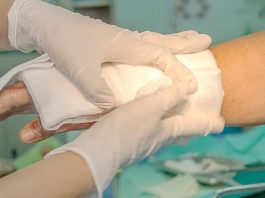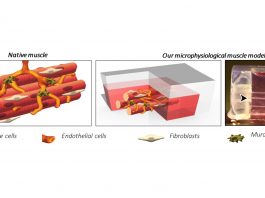Recent European analysis has demonstrated that the European clinical trial landscape for regenerative medicine is falling behind.
The Alliance for Regenerative Medicine (ARM) is an international community of research in regenerative medicine. It is unique compared to other traditional associations as ARM members are not only small and large companies, but a quarter of the membership is non-corporate, non-profit research institutions and patient advocacy groups. At ARM, their work is primarily focused on where the voices of this sector can be brought together to influence the regulatory environment, market access and the reimbursement environment, and to really be able to build a constructive dialogue with policymakers, regulators and payers in order to advance the availability of safe and effective regenerative medicine for patients around the world.
The Innovation Platform speaks to ARM CEO Janet Lambert about the current regulatory environment for cell and gene therapies in Europe, and the European clinical trial landscape.
To begin, can you give us a brief introduction into regenerative medicine? How does regenerative medicine differ from standard medicine practices?
Regenerative medicine includes gene therapy, cell therapies and tissue engineered products. These therapies are distinguished by the fact that they augment, repair, replace or regenerate organ tissues, cells, and genes inside the body. Traditional medicine practices typically involves the patient taking the medicine on a long term basis. Whereas what a lot of regenerative medicines allow for is the possibility of having a one time or a highly durable multiyear therapeutic effect for a limited number of administrations. Many of these new therapies are also unique in that they don’t treat the symptoms of a disease, but they are actually able to repair the fundamental issue. This is a key aspect of what’s different and exciting about regenerative medicine.
In terms of technology, what are some of the latest developments in cell therapy? What advantages come from this area of research and development?
There are a lot of recent developments when it comes to cell therapy. In-between cell and gene therapy is the therapy ‘Gene-modified cell therapy’ (GMCT). GMCT is relevant to any conversation about cell therapy and it’s really one of the most exciting areas of cell therapy right now. At ARM, we track clinical trials with regenerative medicine and one of the things that really jumps out from the latest data is that more than half of the clinical trials in phase one that we are tracking are in GMCT. This is a major development that has happened over the last two years.
In addition to this, another development in cell therapy is CAR T-cell (chimeric antigen receptor T-cell) therapy. Moreover, other adaptive cell therapies are expanding beyond blood disorders to address auto-immune disorders and immune rejection. We’ve seen some exciting advances in allogeneic therapies. There is definitely some interesting clinical developments and encouraging news in allogeneic cell therapies and I think we’ll see some data over the course of 2020 that will also be telling as to the evolution of allogeneic cell therapy.
We are also starting to see some interesting preclinical and clinical activity in allogeneic therapies utilising iPSCs (induced pluripotent stem cells). It is important to note that advances in manufacturing and logistics are easing the administration, delivery and adoption of therapies inside clinical centres. It is an exciting time in cell therapy with the expanding number of clinical trials, different technology approaches, and the integration of gene editing in cell therapy.
What is the current regulatory environment in Europe, and what are some of the current key regulatory issues?
Overall there’s a positive regulatory environment in Europe for cell and gene therapy. Regulators at both the country and pan-European level have been really interested in the sector and forward-leaning in their willingness to have dialogue with organisations such as ARM, and with individual company sponsors. ARM has had a lot of regular and fruitful interactions with the DMA in particular, and they’re preparing for considerable growth in cell and gene therapy over the next three to five years.
I think that one of the challenges facing regulators in Europe, as well as in the United States, is the issue of regulatory exemption. For instance, in Europe, a key challenge is hospital exemption which allows hospitals to create custom made advanced therapy medicinal products (ATMP) for use in a hospital setting for a specific patient. However, hospital exemption has been the subject of vastly different interpretations across the different Member States. As a result, I believe that this is a potential loophole that could undermine the provision of safe, effective and highly validated advanced therapies in Europe. ARM is doing a lot of work on this issue and in the future, we will publish a manuscript on the legal implementation of the hospital exemption across the Member States. It is important to mention is that it’s a very competitive market. Countries in Europe and in North America are working hard to attract cell and gene therapies developers, and the infrastructure and economic growth that comes along with it.
Another thing that ARM has been looking at and will continue to work on in 2020 is clinical trials in Europe. European regulatory authorities are working on/preparing for the implementation of an updated clinical trial revelation. Therefore, in anticipation of this we have conducted an analysis of how the clinical trial landscape in Europe compares with other regions. What we have found is that the growth in Europe isn’t really keeping pace with the growth in clinical trials internationally. As a result, ARM has made a number of recommendations on what European policymakers should do in order to keep up with the growth in this sector. Clinical trials are of course the mechanism whereby patients can get access to gene and cell therapies and that is one of the reasons why it’s important for Europe to keep up with clinical trials. This is another area where regulators and other stakeholders will be working in 2020 to try and streamline the process of approval for multinational trials, to improve the timeline for approval of clinical trials generally, and to really try and address/implement a faster and more consistent approval process for the GMO aspects of gene therapy and allocate sufficient resources/expertise in order to review clinical trial applications.
What would you say are the two main issues regenerative medicine/advanced therapies are currently facing? How can these issues be overcome?
Firstly, one of the main issues is market access; we certainly believe that regenerative medicine can provide long term benefits and, in some cases, long term savings for the healthcare system. However, these therapies are single and limited administration products with durable impact which means that the high upfront cost is challenging for both the healthcare system and payers. Moreover, the traditional way of dealing with assessing value and implementing payments needs to be modified in order to account for the unique nature of many of these gene and cell therapies.
I think that Europe is an interesting market in that we have seen some really powerful products come to market that have dramatic clinical benefits, and still be unsuccessful commercially. We know that unfortunately clinical efficacy alone isn’t enough to create a workable commercial programme, or to get a product/therapy to patients. However, working out these market access issues country by country and region by region is really essential for the field to flourish and for patients to benefit.
Secondly, another challenge facing the sector is manufacturing. The manufacture of these products is very complex compared to traditional pharmaceuticals because they’re so personalised and highly individualised. Therefore, figuring out how to develop a system that allows for efficiencies of scale to be applied to more than one manufacturing processes is a huge challenge for the sector. A lot of time and effort is being focused on this right now and at ARM, we are doing a lot of work in this space. Part of this is to do with the maturation of the field in terms of technological development and implementation, and the development of standards and best practice guidelines.
Janet Lambert
CEO
Alliance for Regenerative Medicine
Tweet @alliancerm
https://alliancerm.org/
Please note, this article will also appear in the first edition of our new quarterly publication.









